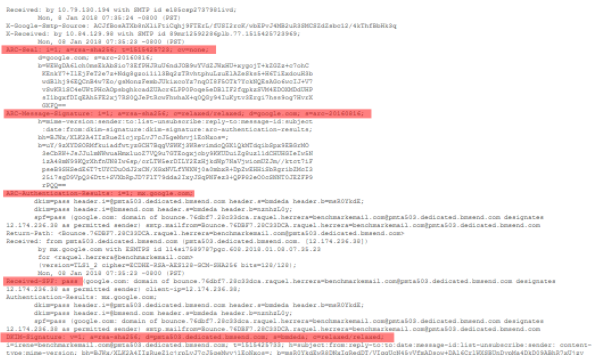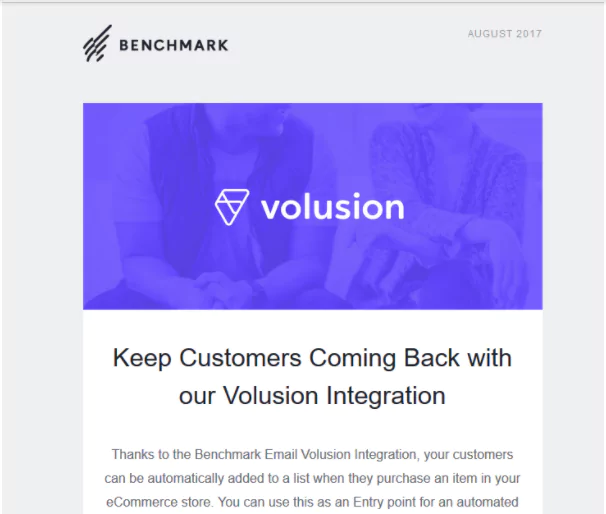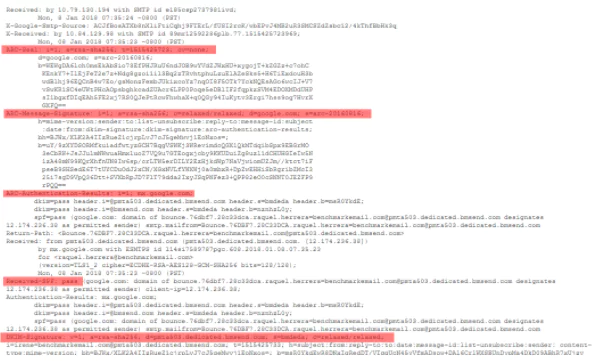The Importance of Configuring SPF and DKIM Records in Your Email Marketing
February 6, 2018 5 min read

How many business emails do you send in a typical month?
Probably a lot. Maybe thousands of them. At the very least a newsletter with weekly or monthly special offers or related information about your company.
Before the birth of Email Marketing, ISPs only managed a small amount of emails. However, in adopting this strategy, our whole database can be reached with a single click. Because of it, ISPs had to create ways to filter emails, letting the good senders have their space in the subscribers´ inbox.
Gmail, Hotmail, and Yahoo, among others, have understood that this is a two-way task and demand the sender go through a series of actions to help them.
Today, we want to explain how important it is to configure SPF and DKIM records in your email marketing strategy.
This may be the first time you’re hearing both names. Thus, throughout this article, we want to help you all to achieve your Email Marketing strategy not only by basing it on designing, sending and measuring, but by addressing external factors that are familiar with your day-to-day routine, that affect your deliverability.
As we said in the beginning of this article, inbox trays spend the day categorizing emails so we only receive messages from:
- A trustworthy sender, that is to say, any email with whom we have regular business, or an email from a colleague, a client, or a family related person.
- Special offers, eBooks, and newsletters in general, the information we have subscribed to.
Nevertheless, there is no doubt Gmail, Hotmail or Yahoo handle a massive amount of advertising emails, and they have to inspect them one by one and give inbox permission only to those that pass their spam filters. At the same time, they have to allocate suspect emails into the junk and spam folders.
With regular, one-to-one emails, we don’t bump into this problem. It becomes a real concern when we use an Email Marketing platform such as ours, where campaigns designed by businesses need to pass these spam filters. However, sending through an ESP is still the best bet for businesses to do email marketing. It’s like the difference in going to a party alone, versus being with the host. The host already knows everyone and has established relationships. In email, those established relationships are what will land you in the inbox, when everything else is done right.
Today, we want to talk to you about the filter related to the safety of your emails being sent. Technological development has enabled spam distributors to easily gain access to the information inside your emails, and therefore the ISPs reward higher deliverability to the senders that take action to encrypt their messages, protecting the delivery process.
What is a SPF record?
A Sender Policy Framework record, or SPF, is a system of domain names (DNS), that identifies mail servers (like Benchmark) that are allowed to send messages on behalf of your domain.
The goal of SPF records is to avoid spammers sending fake messages with your domain´s sender address. The receivers may verify the SPF record to check if a message coming from your domain is from an authorized email server. The advantage of SPF records is that they can only be configured by the domain´s owner and act as a ´passport´ to identify the emails by the time of their arrival, helping ISPs to categorize them into authorized or SPAM.
What are DKIM records?
The DKIM standard (DomainKeys Identified Mail) helps the emails to fight against identity deception (spoofing) by adding a digital signature to your emails´ headers which are always examined by the ISPs.
Basically, it is an additional authentication step for your emails. Differently from SPF, which enables Benchmark to send emails on your behalf, in this case the DKIM records add a domain name identifier to your message, using cryptography techniques to validate it as the receiver gets the email. That way, the ISPs receiving the incoming emails from such domain may use this digital signature to help them determine if each email is legitimate.
In order to have a better understanding, this is what you design:

And this is what the ISPs really analyze and approve through their filters if the email checks with the demanded authentication measures:
The lines marked in red are part of the SPF records already configured and of the DKIM records that still need to be setup.

The record to be configured inside DKIM is called CNAME record. In the same way as with the SPF records, we will add a line of code to the domain´s configuration.
Once you get to this point, it is ideal to contact your hosting company technical support so they can help you setup both domains.
What can you do to prevent the email from ending up in the spam folder or not being sent at all?
It’s very simple. Just add these digital signatures mentioned above to your emails so no one can get in the way of the sending procedure and authorize Benchmark to send emails or your behalf.
To help you with this task, Benchmark Email has developed the technology that enables the compliance with sending safety protocols required by different ISPs.
The procedure is so simple that you only need to access your domain´s account settings, find the DNS, and copy and paste the following lines of code:
STEP 1: update the SPF records
- v=spf1 a mx include:bmsend.com ~all
STEP 2: update the CNAME records
- Tag/Host: bmdeda._domainkey.YOURDOMAIN
- Destination/Objective: bmdeda._domainkey.bmsend.com
Access your domain´s account settings and upgrade these fields. Once it is done, contact us so we can verify it and update your account.
What happens if I do not setup SPF and DKIM records?
If you do not authenticate your emails, your messages can get blocked or end up in the spam folder. Making these adjustments in the configuration is going to increase the possibility that your emails are accepted by the ISPs, reaching the inbox folder properly.
If you are responsible for the email marketing strategy, the head of marketing, or work independently for clients, or even for yourself, as a blogger or SME that does email marketing, please contact our Customer Engagement Specialists if you need any help.
If you believe this content can be be interesting to your audience, please share it!



